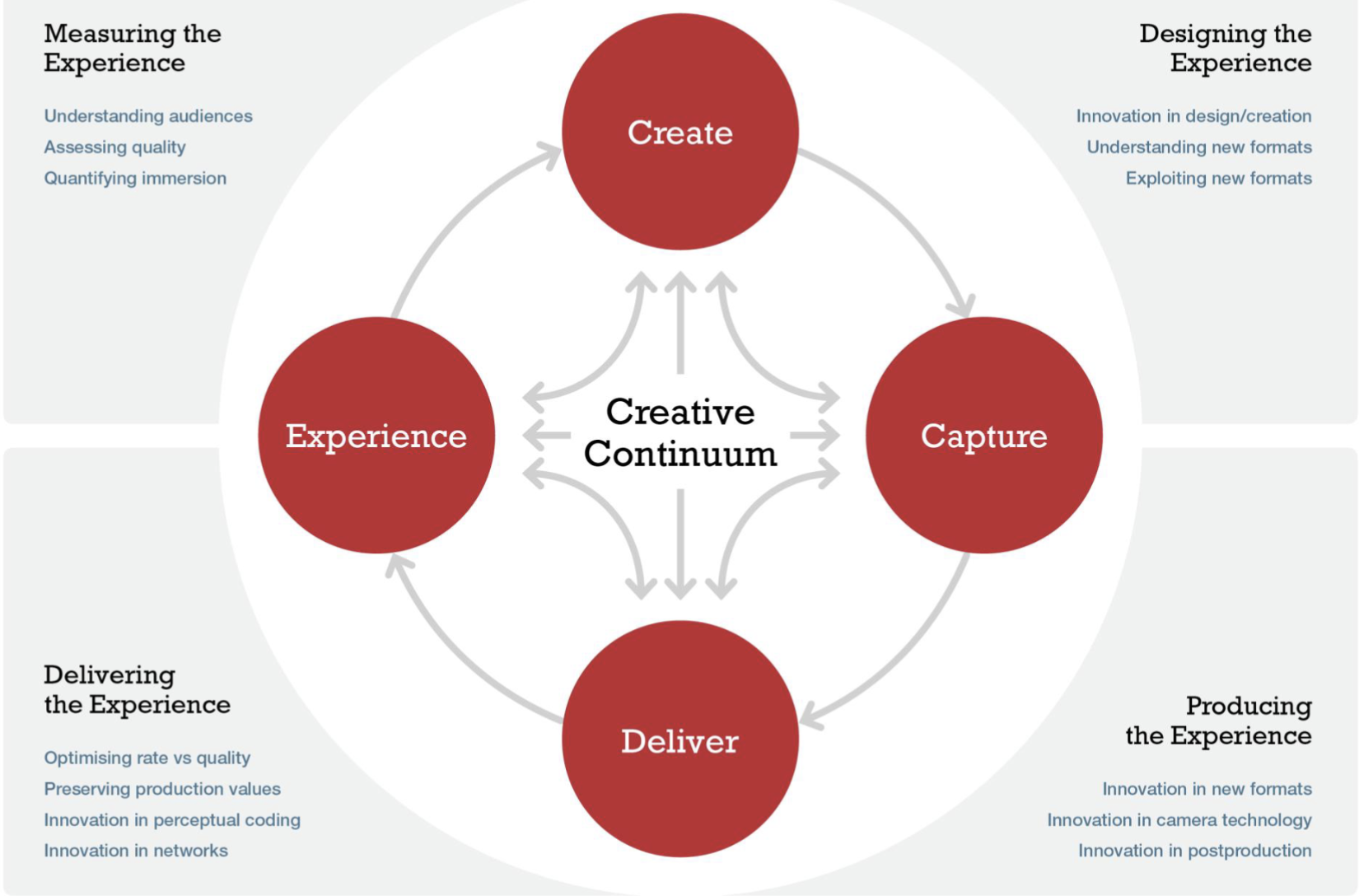Thirty-six people are seated in silent rows in a darkened room. Their heads make small, almost indiscernible movements; their eyes hidden behind virtual reality glasses. As a Jaguar stalks through the trees nearby, their hearts pound and a macaw screeches overhead. The experience they’re viewing responds to their heart rate, brainwaves, every jerk of a leg or glance of an eye. The Jaguar skulks off. Sensors on and around them feeding data back to a real-time simulation of a rainforest. Welcome to the Instrumented Auditorium.
“If we want to understand whether a new experience or new technology is working, we have to ask the audience. The Instrumented Auditorium will allow us to stream data that captures audience responses moment by moment, providing unique insights that take us way beyond current questionnaire-based methods.”
Iain Gilchrist, Professor of Neuropsychology, University of Bristol, and MyWorld Lead for Audience Understanding
As part of the MyWorld programme, the Instrumented Auditorium will offer cutting edge evaluation of user responses to mediated digital content, and inform the development of the new technologies needed to experience it. It will enable MyWorld researchers and partners to explore the cutting edge of the Creative Continuum – a conceptualisation of the creative process that recognises it is interconnected, multi-directional and multi-dimensional.
“The Creative Continuum is both a philosophy and a way of working. It covers a lot of things that people in the creative sector often think of as being either discrete elements or as an end-to-end process. Creation, production, delivery and consumption are, in fact, highly interdependent.”
David Bull, Professor of Signal Processing and Director of the Bristol Vision Institute, University of Bristol
The Creative Continuum applies not only to the process of content creation but also the different perspectives and skill sets that are needed to deliver it, resulting in innovative capture, delivery, measurement and tooling for the creative industries.
That might mean computer scientists working with psychologists and ethicists to deliver immersive VR experiences that address privacy concerns. Or a start-up pioneer making use of the specialist expertise of PhD students to find ways for an entertainment company to better engage with their audiences, for example. Such collaborative projects cannot successfully build the next generation of audience experiences without cross-disciplinary teams working together to solve challenges across technology, tooling, media types, formats and narrative.
Whilst the MyWorld programme and its impact are being delivered in the West of England region, the reach will be global. The region’s creative output is world renowned,with brands including Wallace & Gromit and Planet Earth. The tools and creative processes which underpin the Creative Continuum are distributed and hybrid; and this is supported by the region’s technology credentials with companies such as UltreaLeap, Motion Impossible and Condense Reality providing world leading interface, tracking, haptics and acquisition technologies.
by Nic Fleming
